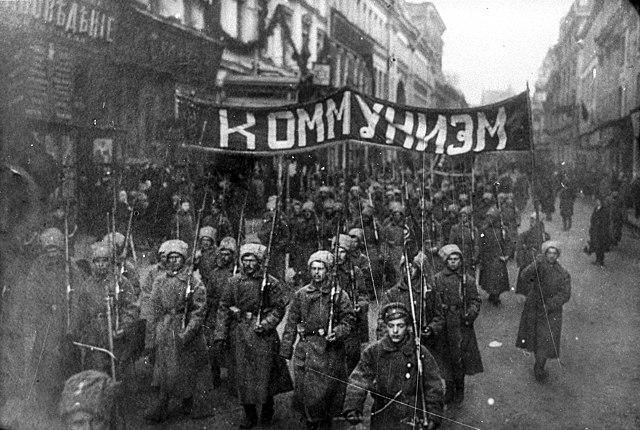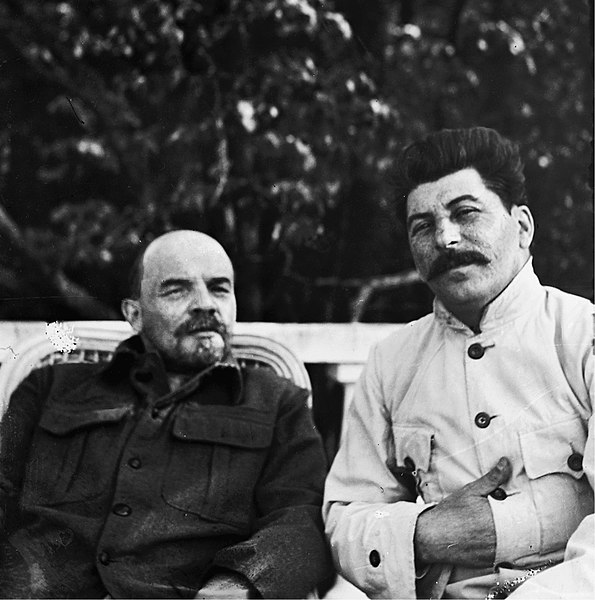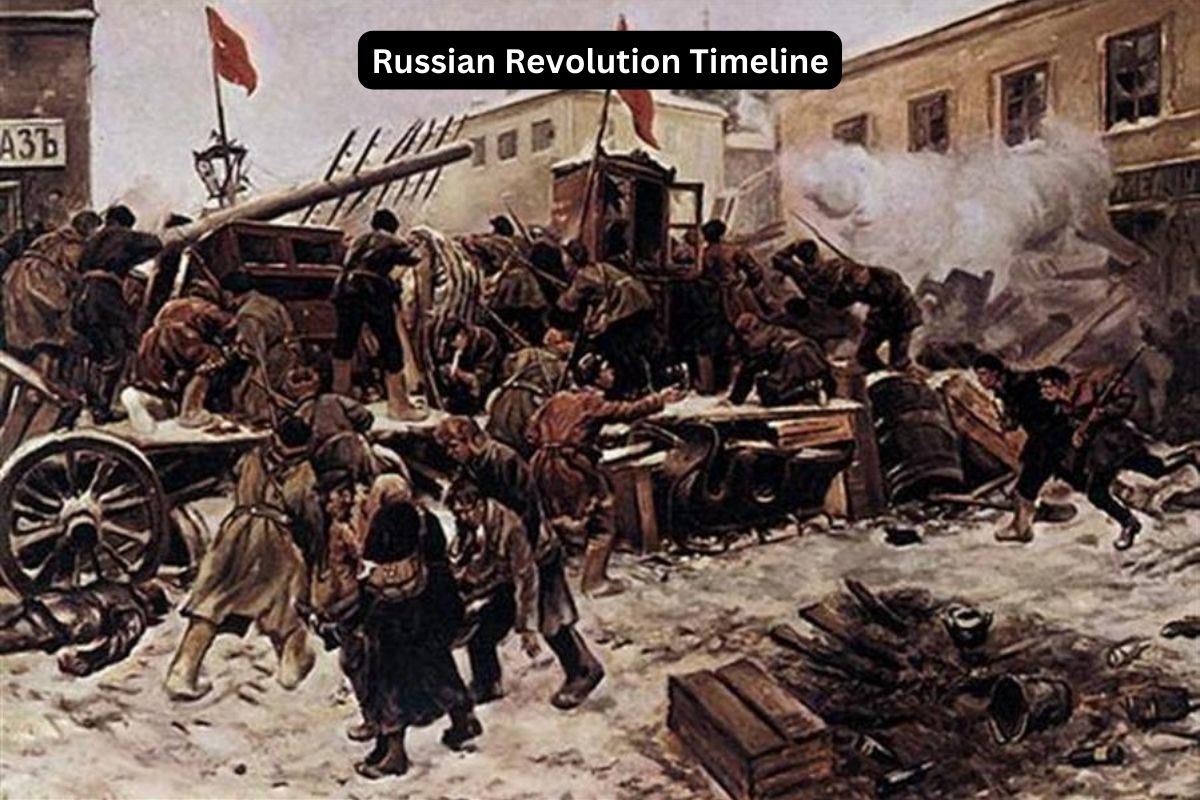The Russian Revolution of 1917 remains a pivotal event in global history, transforming Russia’s political, social, and economic landscape. This article offers a concise overview of this momentous period, tracing its origins, key events, and repercussions.
From the February Revolution’s overthrow of the Tsarist autocracy to the October Revolution’s Bolshevik rise to power under Lenin, each phase of the revolution is examined briefly.
The tumultuous Civil War, foreign intervention, and the signing of the Treaty of Brest-Litovsk, marking Russia’s withdrawal from World War I, are also highlighted.
| Event | Date | Description |
|---|---|---|
| February Revolution | February 23-27, 1917 | – Strikes and demonstrations erupt in Petrograd due to food shortages and discontent with the Tsarist regime. – Troops mutiny and join the protesters. |
| February 27-28, 1917 | – Petrograd Soviet of Workers’ and Soldiers’ Deputies is formed. – Tsar Nicholas II abdicates, ending Romanov rule. | |
| April Crisis | April 16, 1917 | – Lenin returns to Russia from exile in Switzerland. – Lenin publishes the April Theses outlining Bolshevik objectives. |
| July Days | July 3-7, 1917 | – Demonstrations by workers and soldiers in Petrograd suppressed by the provisional government. – Bolshevik leaders arrested. |
| Kornilov Affair | August 25-30, 1917 | – General Kornilov attempts coup against the provisional government. – Kerensky turns to Bolsheviks for help, bolstering their support. |
| October Revolution | October 25, 1917 | – Bolshevik forces seize key points in Petrograd. – Provisional government collapses. – Second All-Russian Congress of Soviets approves Soviet power. |
| October 26, 1917 | – Bolsheviks form the Council of People’s Commissars with Lenin as chairman. | |
| Civil War | 1918-1922 | – Bolsheviks face opposition from White Army, foreign intervention, and nationalist uprisings. – Red Army led by Trotsky fights counter-revolutionary forces. |
| Treaty of Brest-Litovsk | March 1918 | – Bolshevik government signs peace treaty with Germany, ending Russia’s involvement in World War I. – Russia cedes territories to the Central Powers. |
Timeline of Russian Revolution
February Revolution (1917)
February 23-27, 1917: The February Revolution began with widespread strikes and demonstrations in Petrograd (now St. Petersburg), primarily due to food shortages, discontent with the ongoing World War I, and general dissatisfaction with the autocratic rule of Tsar Nicholas II.
Workers from various factories went on strike, demanding better working conditions and an end to the war.
February 27-28, 1917: The situation escalated as troops stationed in Petrograd mutinied and joined the protesters. The Petrograd Soviet of Workers’ and Soldiers’ Deputies was formed, representing the interests of the striking workers and disaffected soldiers.
Also Read: Facts About the Russian Revolution
Tsar Nicholas II, realizing the gravity of the situation, abdicated the throne on March 2, 1917, effectively ending centuries of Romanov rule and leading to the establishment of a provisional government.

April Crisis (1917)
April 16, 1917: Vladimir Lenin, the leader of the Bolshevik Party, returned to Russia from exile in Switzerland. Lenin’s return marked a significant development in the revolutionary landscape.
He immediately began advocating for a radical transformation of the political landscape in Russia and published the April Theses, which outlined the Bolshevik objectives, including the overthrow of the provisional government and the establishment of Soviet power.
July Days (1917)
July 3-7, 1917: The July Days witnessed a series of spontaneous demonstrations and protests in Petrograd, primarily driven by the dissatisfaction of workers and soldiers with the provisional government’s handling of the war effort and the deteriorating economic conditions.
Also Read: Russian Civil War Facts
However, these demonstrations lacked clear leadership and direction, and the government quickly labeled them as a Bolshevik-led uprising.
The provisional government, fearing a coup attempt, responded with force, suppressing the protests and arresting Bolshevik leaders, including Lenin, who went into hiding to avoid capture.
While the July Days failed to overthrow the provisional government, they further polarized political factions and heightened tensions within Russian society, setting the stage for further conflict and upheaval in the months to come.
Kornilov Affair (August 1917)
August 25-30, 1917: The Kornilov Affair was a failed coup attempt orchestrated by General Lavr Kornilov, who was appointed by Alexander Kerensky, the leader of the provisional government, as the Supreme Commander of the Russian Army.
Kornilov sought to establish military dictatorship and crush the growing influence of socialist and revolutionary movements. However, Kerensky, fearing Kornilov’s ambitions, turned to the Bolsheviks for help, arming workers and Red Guards to defend Petrograd against the advancing troops loyal to Kornilov.
The coup ultimately collapsed due to lack of popular support and coordination among Kornilov’s forces. The Kornilov Affair further discredited the provisional government and bolstered the revolutionary credentials of the Bolsheviks.

October Revolution (1917)
October 25, 1917: The October Revolution, also known as the Bolshevik Revolution, marked the climax of the Russian Revolution. On this day, Bolshevik forces, under the leadership of Vladimir Lenin and Leon Trotsky, launched a coordinated insurrection in Petrograd.
They seized key points such as the Winter Palace, the seat of the provisional government, and arrested its members. The Bolsheviks then proclaimed the establishment of Soviet power, with the Second All-Russian Congress of Soviets approving the transfer of authority to the Bolsheviks.
Lenin formed a new government, the Council of People’s Commissars, with himself as chairman, thus consolidating Bolshevik control over Russia.
Civil War (1918-1922)
The Civil War in Russia erupted following the October Revolution and lasted for several years, involving multiple factions vying for control over the country.
The Bolsheviks, or Reds, led by Lenin, aimed to establish socialism and consolidate their power. They faced opposition from various groups, including the White Army, composed of anti-Bolshevik forces such as monarchists, liberals, and supporters of the old regime.
Additionally, foreign intervention from countries such as Britain, France, the United States, and Japan further complicated the conflict. These foreign powers intervened on behalf of the White Army, seeking to prevent the spread of communism and protect their geopolitical interests in Russia.
The Civil War was characterized by brutal fighting, atrocities, and widespread devastation across the country. The Red Army, led by Trotsky, ultimately emerged victorious, securing Bolshevik dominance and paving the way for the establishment of the Soviet Union in 1922.
Treaty of Brest-Litovsk (March 1918)
March 1918: The Treaty of Brest-Litovsk was a peace treaty signed between Soviet Russia and the Central Powers, effectively ending Russia’s involvement in World War I. Negotiations for the treaty began shortly after the Bolsheviks seized power in the October Revolution.
The Bolshevik government, led by Lenin, sought to fulfill their promise of “peace, land, and bread” by withdrawing from the war and ending Russia’s participation in the conflict.
Under the terms of the treaty, Russia ceded vast territories to Germany, Austria-Hungary, Bulgaria, and the Ottoman Empire. These territorial losses included Finland, the Baltic States, parts of Poland, Ukraine, and the Caucasus region. The treaty was highly controversial and led to internal divisions within Russia, with many Russians viewing it as a betrayal of national interests.
However, Lenin and the Bolshevik leadership believed that securing peace was necessary to consolidate their power and focus on building socialism in Russia. By signing the treaty, they hoped to buy time to strengthen their hold on the country and advance their revolutionary agenda.

Aftermath of the Russian Revolution
The Russian Revolution and the subsequent establishment of Soviet power had profound and far-reaching consequences for Russia and the world. The Bolsheviks embarked on an ambitious program of social, economic, and political transformation, aiming to create a socialist society based on Marxist principles.
Domestically, the Bolsheviks implemented radical reforms, including the nationalization of industry, redistribution of land to peasants, and the introduction of new social welfare programs. They also initiated sweeping cultural and educational reforms aimed at promoting literacy, women’s rights, and workers’ empowerment.
Internationally, the Russian Revolution inspired revolutionary movements around the world and contributed to the spread of communism as an ideology. It also fueled fears among Western powers of a global revolution and led to increased hostility and intervention against the Soviet Union.
However, the revolution also resulted in significant challenges and hardships, including widespread famine, economic chaos, and political repression. The Civil War and foreign intervention further exacerbated these problems, causing immense suffering and loss of life.
Despite these challenges, the Bolsheviks managed to consolidate their power and establish the Soviet Union in 1922, bringing an end to centuries of Tsarist autocracy and laying the foundation for the world’s first socialist state.
